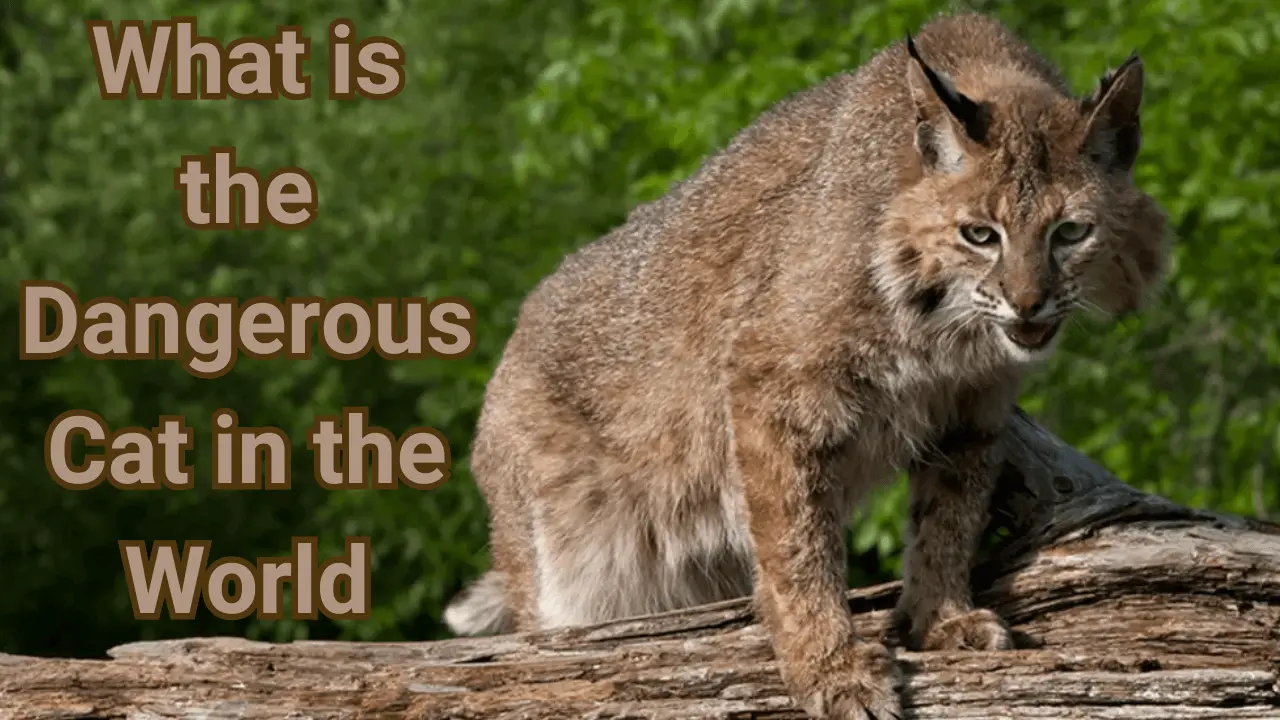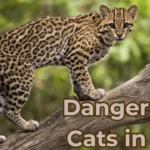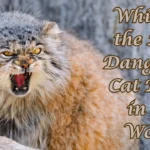The black-footed cat (Felis Nigripens) is the most dangerous cat in the world native to Southern Africa and can weigh anywhere from 1.5 kg (3.3 bis 22.5 Lb, weight 6.8 W) at birth. It has become one of the most dangerous felines in its natural habitat. It’s known for being small but capable of killing humans due to its large size and aggressive behavior.
Hunting success rate staggering 60% far outperforming larger felines such as lions and leopards. A black-footed cat is known for its nocturnal feeding habits as it preys on small mammals, birds, and insects. It can consume up to 20% of its body weight in one night without resting at the end of each day.
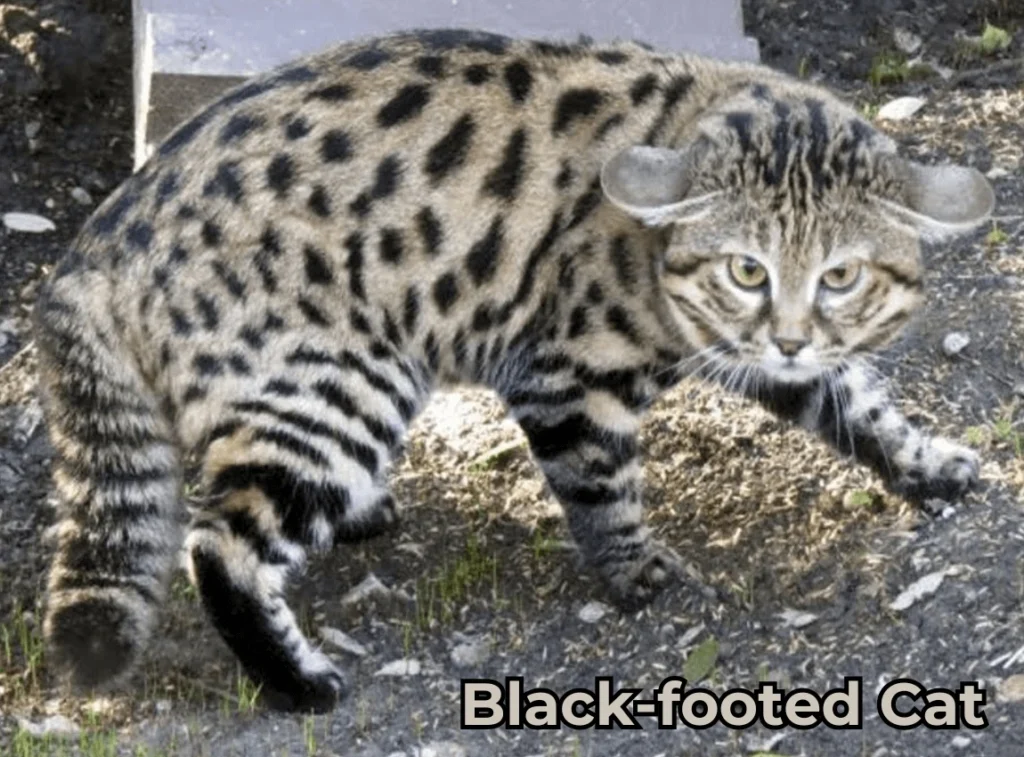
The ape’s remarkable stealthness, sharp sense of observation, and unrelenting hunting skills make it one of the most proficient predator species on earth. The world’s most lethal cat the black-footed is at risk of extinction due to its deadly effectiveness. However, it remains vulnerable because habitat loss and human activity are rampant.
- Understanding the History of Most Dangerous Cats in the World:
- The Most Dangerous Wild Cats:
- Most Dangerous Cat in the World: Black-Footed Cat:
- What Makes the Black-Footed Cat Dangerous:
- Why Is the Black-Footed Cat a Conservation Concern:
- The Most Dangerous Big Cat in the World: The Tiger
- Comparison: Tiger vs. Other Big Cats:
- The Human Factor of Tiger:
- Domesticate Cats: Are They Dangerous?
- Human Encounters with Dangerous Cats Breed:
- The Role of Conservation:
- Conclusion:
- Frequently Asked Question:
Understanding the History of Most Dangerous Cats in the World:
Lions, tigers, and leopards are iconic animals in the big cat world, serving as symbols of strength and danger to humans. They possess exceptional power, agility, muscle endurance, hunting skills, predatory behaviors, predation patterns, hereditary behavior, or even death threats. Cultural myths, legends and even conflicts with humans have been triggered by the dominance of animals in or around food chains from Africa to Asia.
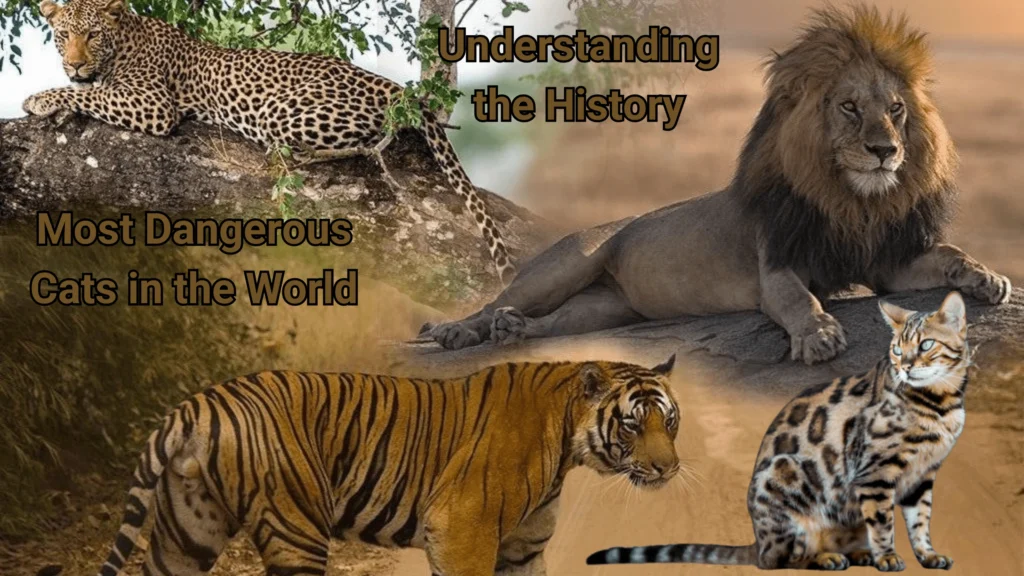
The black-footed cat of Southern Africa is a prime example of how predatory cats can be. Its small size doesn’t mean it’s the only threat to felines which are often dangerous even in their smaller form. Small wild cats are characterized by their ability to conceal themselves, move quickly, and execute precise hunting techniques with remarkable accuracy.
These cats outperform larger relatives in size-sparing numbers due to high success rates on these types of pets. The history of dangerous cats demonstrates the diversity and adaptability of these predators. They from dominating territories to surviving in harsh environments all show their importance as important members of ecosystem species.
The Most Dangerous Wild Cats:
Tiger (Panthera Tigris):
Tigers are the most massive and powerful felines in terms of physical strength, prey ability, size, and population. Deer, wild boar and buffalo are all prey on animals larger than life that can be killed by their powerful limbs and sharp claws.
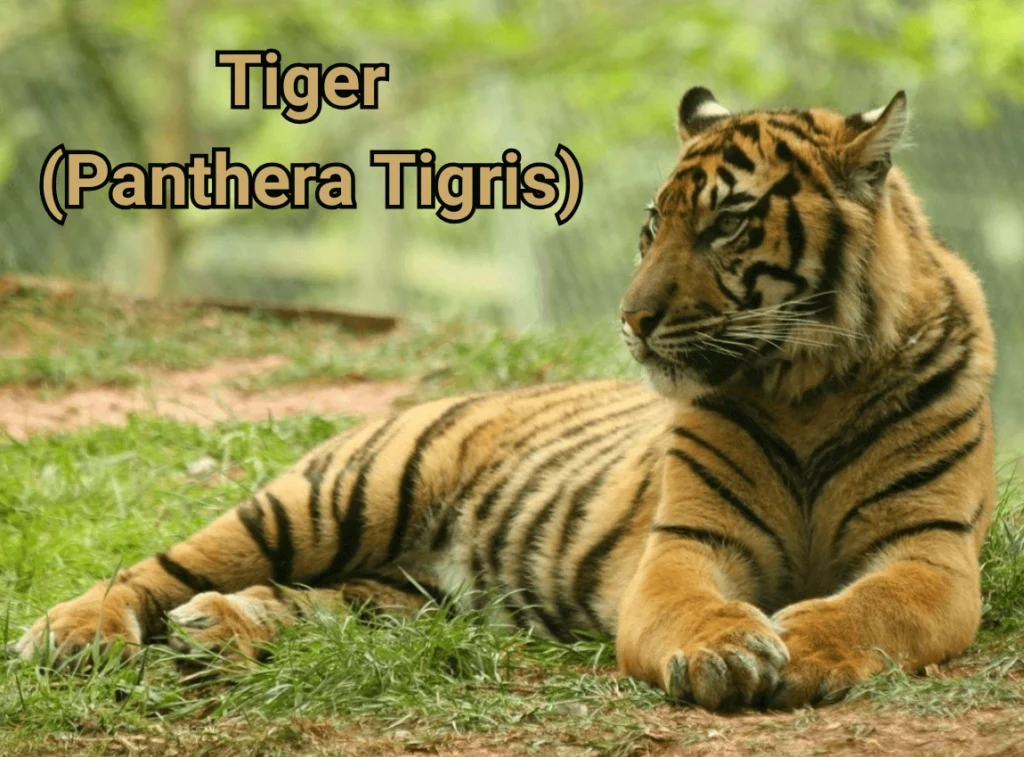
Tigers are responsible for a significant number of human fatalities, particularly in areas like India and Southeast Asia. Although they occur rarely (and often due to habitat loss) these attacks emphasize the formidable nature of this animal. Tigers are at risk of disappearing due to poaching and habitat loss making their conservation efforts essential.
Lion (Panthera Leo):
Lions are apex predators and one of the most aggressive felines in nature. They are social animals hunting together as pride or “princesses.” They can use this collaboration to hunt and eliminate massive prey like zebras and wildebeests.
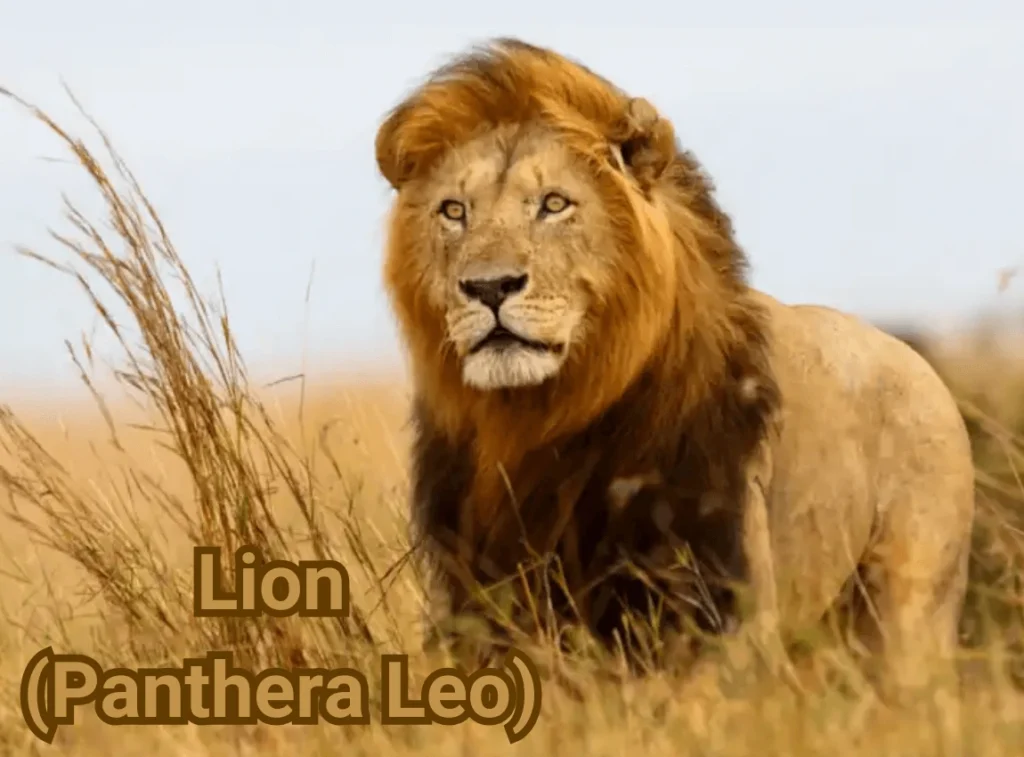
Lions have a history of conflict with humans particularly in Africa. They are known to attack livestock and occasionally human beings during their prey on animals such as sheep or cattle. Lions can pose a significant threat as evidenced by the tragic deaths of railway workers in Kenya during World War II.
Leopard (Panthera Pardus):
Leopards are known for their stealth and agility. Despite being smaller than both tigers and lions leopards can be very dangerous due to their ability to hunt in all environments including harsh predator areas. Leopards are lone predators and can consume prey up to twice their weight in trees to avoid scavengers.
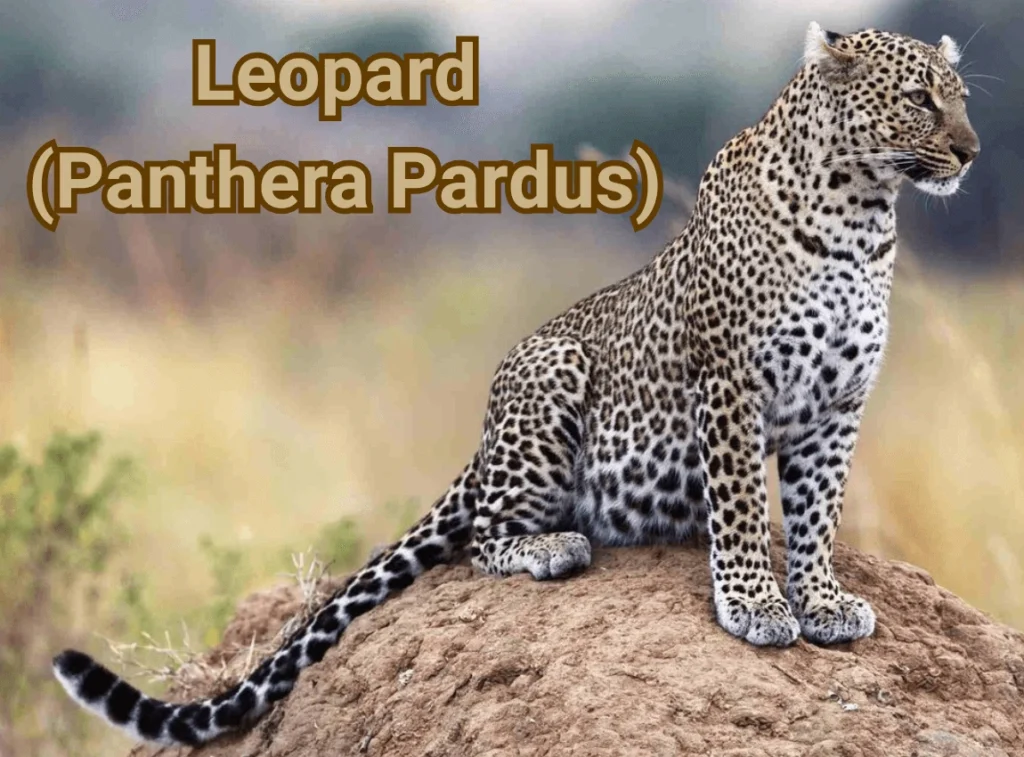
Leopards are frequently encountered by humans particularly in urban areas of Africa and Asia. Their stealthness and ability to adapt to human-altered landscapes make them a unique threat that can only be avoided by predatory animals. Leopards are at risk of extinction but they also face the same problem due to habitat destruction and hunting.
Jaguar (Panthera Onca):
Jaguars are indigenous to the Americas and possess a formidable bite that is more powerful than any other cat size and strength. This biting ability allows them to penetrate turtle shells while crushing bones. They make them an ideal companion for striking up solid objects like heads on feed worm implants. Jaguars are top predators in their natural habitats consuming an array of prey from deer to capibaras.
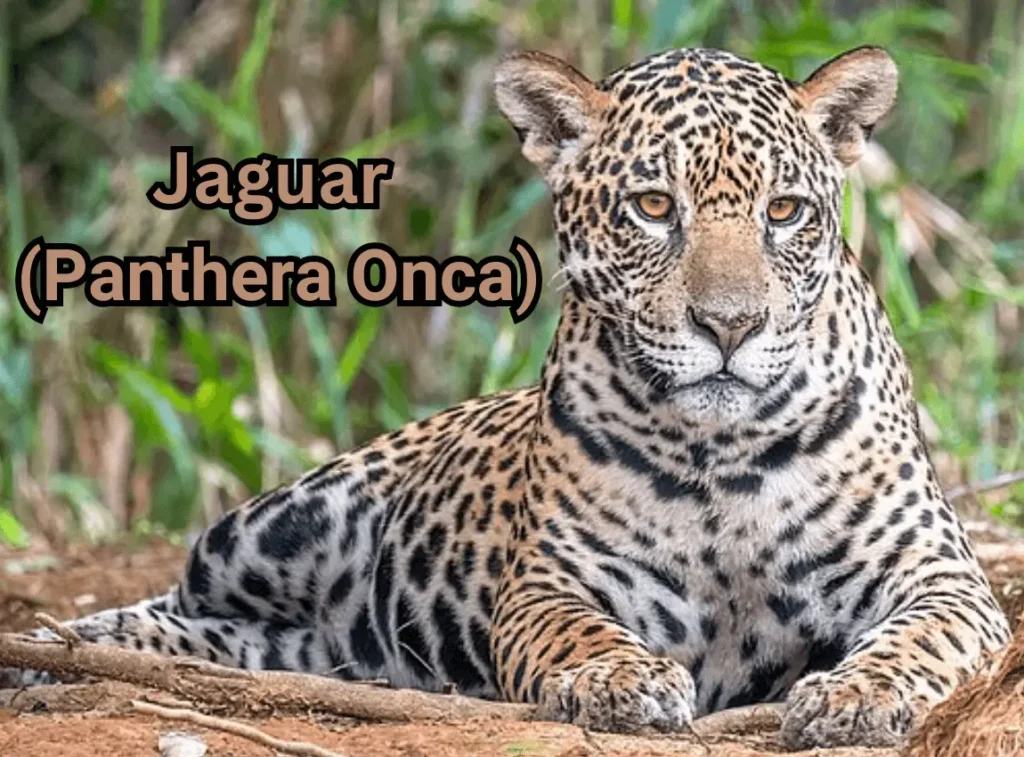
Jaguars despite being less likely to attack humans other animals like tigers or lions and often hiding in plain sight of people’s clothing are still dangerous. The numbers of these magnificent cats are dwindling due to deforestation and poaching making conservation efforts essential.
Black-footed Cat (Felis Nigripes):
The black-footed cat which possesses an exceptional hunting success rate of over 60% and is native to southern Africa may not seem like the most lethal cat on earth. Although it is only 2-6 pounds in weight. It has been known for its deadly killing abilities.
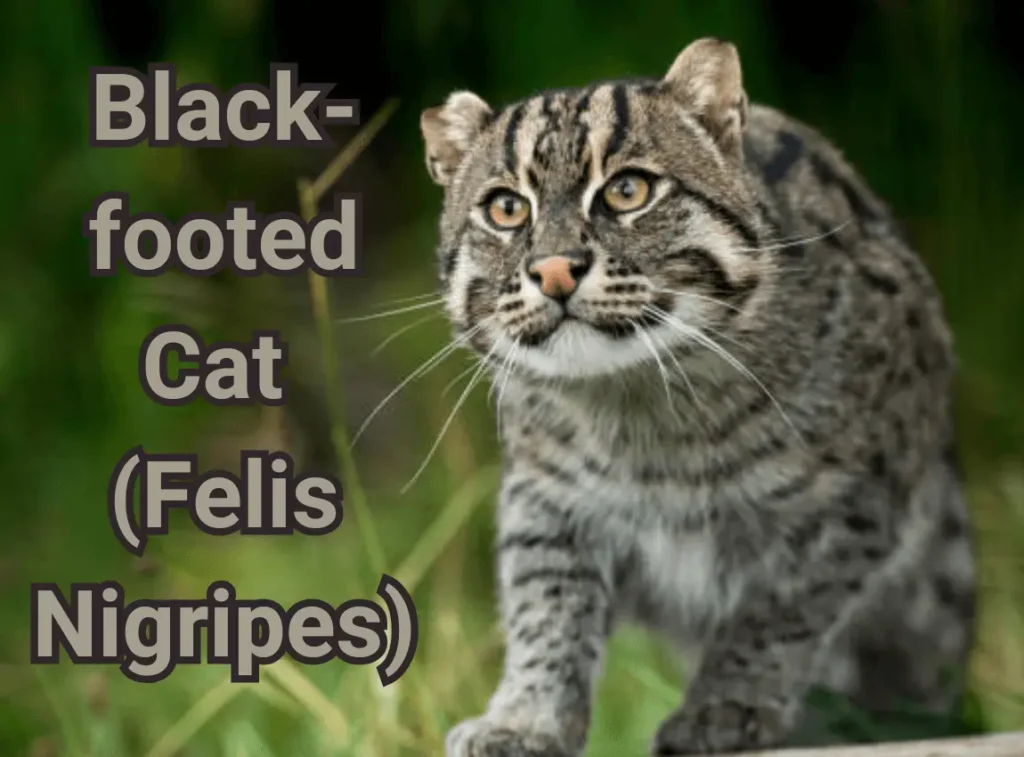
Killing as many small animals at night these nocturnal hunters are highly efficient predators and can kill up to 14 prey species in one evening. Black-footed cats are not dangerous to humans but their exceptional hunting skills make them some of the most lethal felines.
Most Dangerous Cat in the World: Black-Footed Cat:
Despite being often overshadowed by fierce rivals such as lions and tigers, the black-footed cat (Felis Nigripens) is considered the most dangerous feline worldwide. This small but powerful Felipe species hailing from Southern Africa is known for its formidable hunting abilities and deadly killing powers.
What Makes the Black-Footed Cat Dangerous:
Unmatched Hunting Success:
The black-footed cat boasts a staggering hunting success rate of 60% making it the most effective predator among all wild cats. Despite its small size only about 1.5 to 2.5 kilogram (3.3 to 5.5 lbs) this cat hunts tirelessly consuming up to 20% of its body weight in prey every night.
Stealth and Speed:
This nocturnal predator can use its sharp senses to stalk grasslands and desert prey while concealing itself in the darkness. It requires only stealth, speed, and patience to capture small mammals, birds or insects that it carelessly mows down at night.
Physical Characteristics of the Black-Footed Cat:
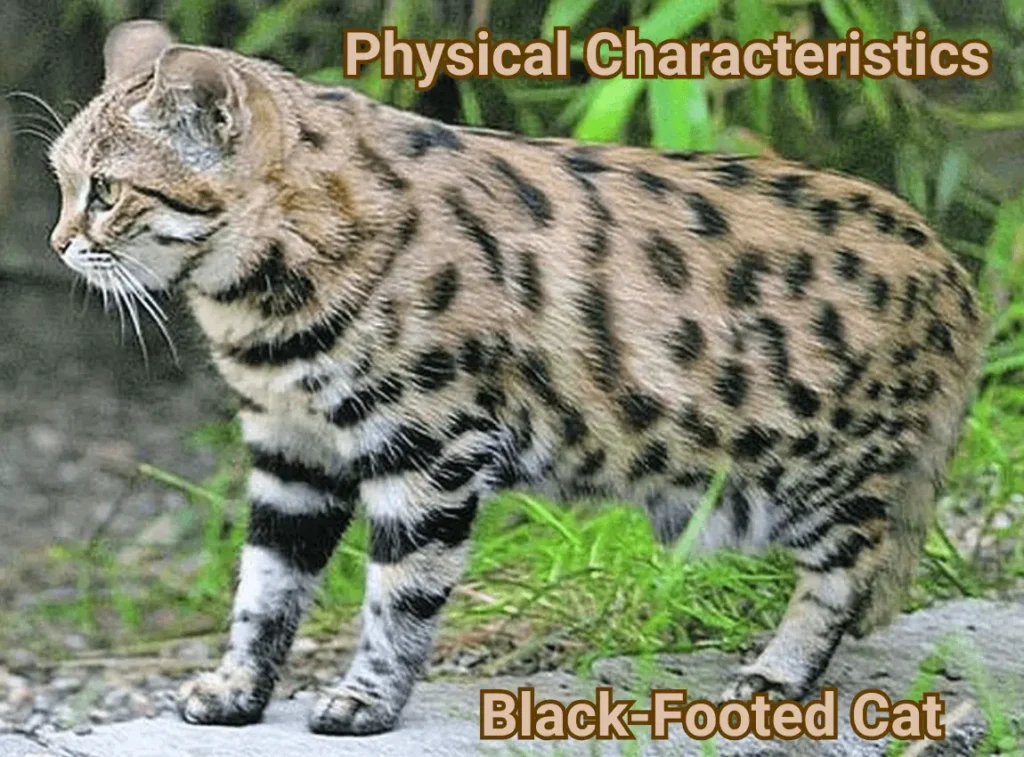
| Feature | Details |
| Scientific Name | Felis Nigripes |
| Average Weight | 1.5–2.5 kg (3.3–5.5 lbs) |
| Length | 35–52 cm (13.8–20.5 inches) |
| Lifespan | 10–15 years (in captivity) |
| Habitat | Grasslands, savannas, and deserts |
| Diet | Small mammals, birds, and insects |
| Hunting Success | 60 percent |
Why Is the Black-Footed Cat a Conservation Concern:
The International Union for Conservation of Nature (IUCN) has identified the population of black-footed cats as “Vulnerable” due to habitat loss and hunting pressures. Conservation efforts aim to preserve its natural habitat and monitor it for potential occurrences. They lead to the identification of areas that may be threatened or endangered by human activity.
The Most Dangerous Big Cat in the World: The Tiger
Big cats are both fascinating and highly skilled predators. The tiger, lion, jaguar, and leopard among others are particularly impressive due to their strength in hunting big cat populations. Let’s know which big cat is the most lethal.
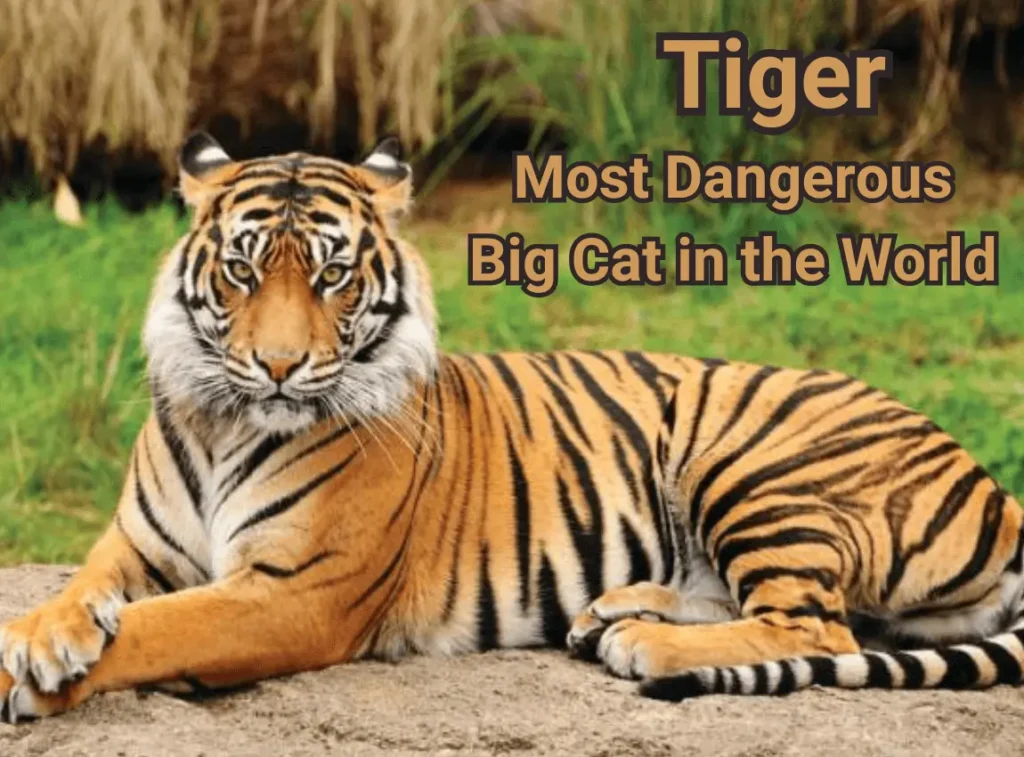
Why Tigers Are the Most Dangerous Big Cats:
Known as the most lethal of all big cats. The Panthera Tigris is one of the world’s deadliest species. Found mostly in Asia these feral and reclusive creatures are recognized for their exceptional strength, stealthness and territorial dominance. Deer and water buffalo are among the larger prey that can be killed by their claws which allow them to use sharp knives or long guns.
Tigers are the primary cause of fatal human-wildlife conflicts involving big cats. In some areas such as the Sundarbans in India and Bangladesh there have been recorded cases where cats in the wild animals hunted by tigers preying on humans making them highly sought after for their aggressive nature.
Hunting and Physical Capabilities:
Tigers are a combination of fast, powerful and agile animals. They can leap up to 20 feet at one-inch jumps and run in short bursts through the air or reach speeds between 30–40 mph (60 km/hr) on open ground. Their jaws have a bite force of roughly 1,050 pounds per square inch which can crush bones with their teeth and other internal organs.
Comparison: Tiger vs. Other Big Cats:
Tigers are more likely to attack humans than jaguars despite having the most intense bite force among big cats.
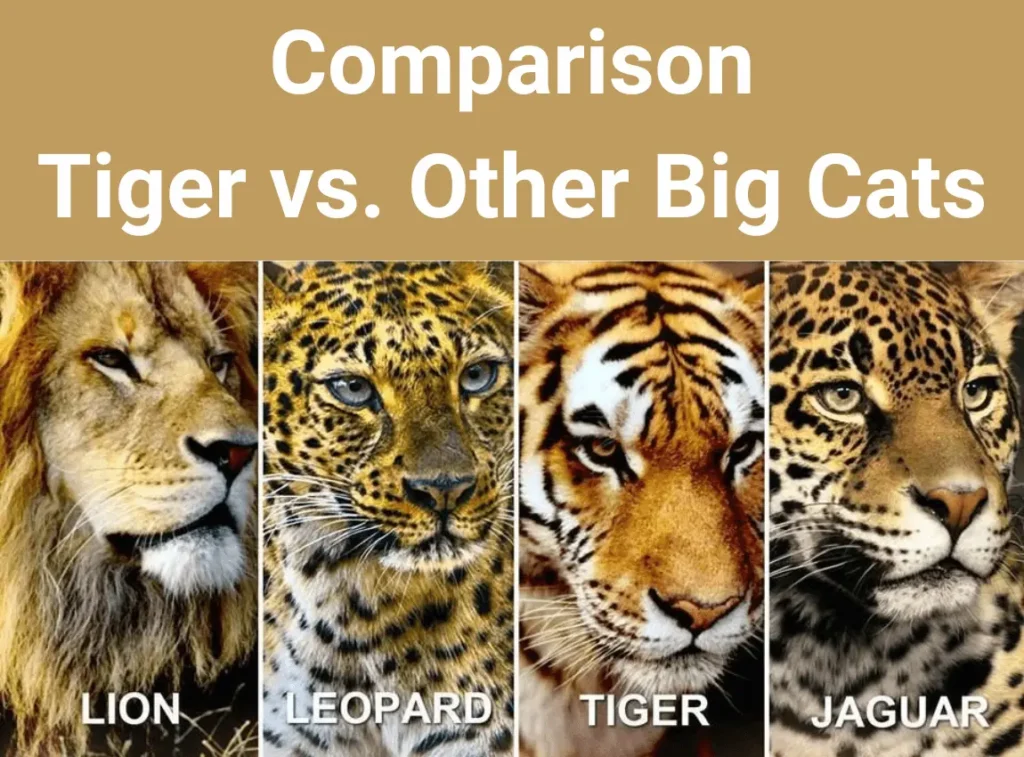
| Big Cat | Habitat | Bite Force (psi) | Speed (mph) | Known For |
| Tiger | Forests, grasslands | 1,050 | 30–40 | Strength, stealth, territorial nature |
| Lion | Savannas, grasslands | 650 | 35–50 | Pride dynamics, dominance |
| Jaguar | Rainforests, wetlands | 1,500 | 50 | Powerful bite, ambush hunting |
| Leopard | Forests, savannas | 300–400 | 36 | Agility, adaptability |
The Human Factor of Tiger:
Tiger-Human Conflicts:
Tigers’ natural habitat overlaps with human settlements particularly in areas like South Asia where tigers are at risk of attack due to the destruction they face from their surroundings and prey depletion.
Conservation Status:
The endangered status of all tiger subspecies is due to factors such as habitat loss, poaching and human-wildlife conflict. Project Tiger in India is one example; other efforts are needed to prevent the exacerbation or decimation of elephants by humans.
Domesticate Cats: Are They Dangerous?
Domesticated cats also known as domestic cats is a type of feline that is not typically dangerous to humans. Although it may be slightly smaller and less robust than its wild counterparts. However, there are some concerns about the potential danger the female can pose significant physical injury risks when attacked by dogs or rabbits.
- Hunting Impact: Domestic cats are responsible for causing significant declines in the population of birds and small mammals across multiple regions. Even when indoor cat populations drop off their predatory nature makes them effective hunters.
- Disease Transmission: Cats can spread diseases like toxoplasmosis which can have serious health consequences for pregnant women and those with weakened immune systems.
- Aggressive Behavior: In rare cases feral or poorly socialized domestic cats may display aggressive behavior in response to being threatened.
Although these risks are relatively low when contrasted with wild cats. They serve as an indication of the need for responsible pet ownership.
Human Encounters with Dangerous Cats Breed:
Habitat encroachment or resource conflict between humans and wild cats can lead to significant conflicts. Despite their rarity these incidents highlight the necessity of coexistence strategies that ensure both humans and cats are protected.
Man-Eating Tigers:
In certain parts of India tigers have been known to attack humans (e.g. in the Sundarbans) either due to loss of natural prey or because there is no viable territory dispute between man-eater species. This practice has also led to reports about extermination and killing by these animals from areas. Where their habitat was lost during hunting for wild plants that may be threatened as particular food sources.
Lion Attacks:
In rural Africa lions may attack livestock and farmers in return. However, it is not common for them to kill humans as these attacks are rare; some animals have been observed attacking people while hunting other wildlife with similar behavior.
Leopard Conflicts:
Leopards have been observed in Indian urban areas attacking humans and domesticated animals including snow leopards that are known to hunt these wildlife.
The Role of Conservation:
Wild cats are essential to their ecosystems as they act as a natural predator and prey species control that ensures there is no single threat from any particular group. The habitat of these awe-inspiring creatures and their majestic prey require conservation efforts that can ensure their survival.
- Habitat Preservation: Wild cats require habitat protection in forests, grasslands and other natural areas to survive.
- Human-Wildlife Coexistence: Human and feline cohabitation can be aided by offering education to communities and taking steps to minimize conflicts among humans.
- Anti-Poaching Initiatives: The illegal hunting of wild cats for their remains including fur and bones as well as other body parts must be strictly enforced through laws and measures to prevent poaching.
Also Read: https://thepetlive.com/can-siberian-cats-colors-be-black/
Conclusion:
The world’s most dangerous cat is the black-footed feline. It outmatches even larger cats with its superior hunting and killing abilities. This makes it a highly lethal predator on par avec les agents de Lambert in World War-I.
A Deus Exotic Cat that looks exactly like a Lion or Tiger as an animal of his kind. The black-footed feline possesses an exceptional hunting success rate of 60% making it the most adept at stalking and apprehending prey. The cat species is a true top predator in the world in its natural habitat due to its stealthy, fast and precise movements.
As such it faces significant threats from habitat loss that require immediate attention on conservation efforts. The black-footed cat and other similar felines’ behavior can help us understand the fragility of our species. As it teaches us about the importance of maintaining wildlife for future generations.
Frequently Asked Question:
Which cat is the most aggressive?
Jaguars are known for their aggressive nature which includes territorial hunting and killing prey quickly.
What cat kills the most prey?
Black-footed cats are the deadliest cat in the world with a 60% cats successfully rate in hunting.
Which is the most powerful cat?
The Tiger is the most powerful cat known for its formidable strength and ability to hunt large prey like deer or wild boar.
How dangerous are big cats?
Big cats including lions, tigers, and leopards are known for their size, strength, aggression, aggressive behavior, high levels of fear during migration, or extreme vulnerability.
Who is stronger, a lion or a tiger?
Tigers and lions are both powerful animals but the latter have more muscle mass (and therefore less strength) than their male counterpart. Which of these four cats poses with greater threat? The Nigripes cat is also known as the black-footed cat.
This is considered by many to be the most dangerous cat in existence. However, it has a high success rate of 60% hunting (flying on water) and due to be also considered an efficient predator.
Why is the black-footed cat dangerous?
Its lethal efficiency and precision in hunting make the black-footed cat extremely dangerous. As it can capture prey much larger than itself with stealth and speed.
